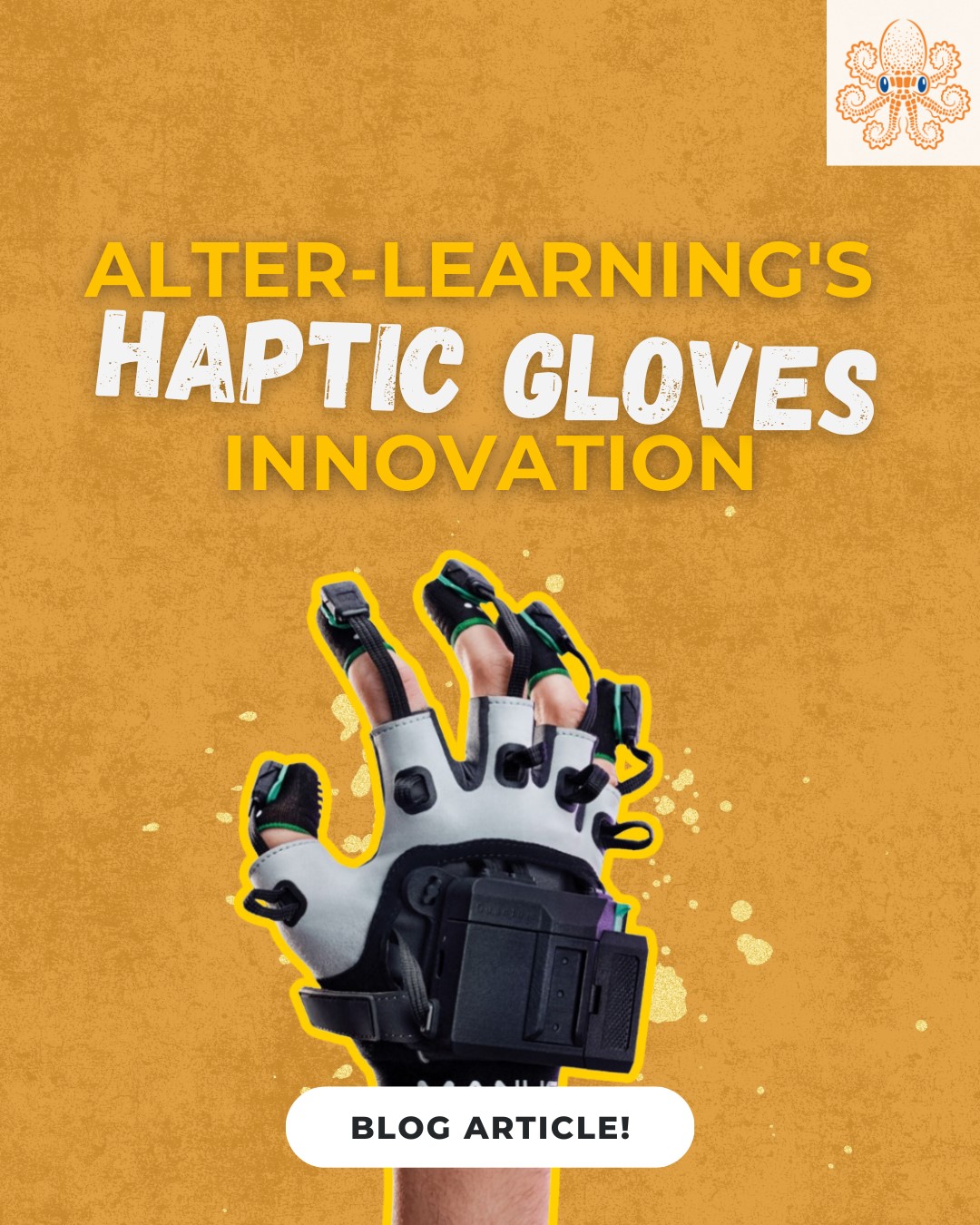By Krista Shepard
Technology continues to reshape the way students learn, and nowhere is this more evident than in the world of STEAM education. At the forefront of this transformation is Alter-Learning, a cutting-edge educational platform that integrates haptic glove technology with Extended Reality (XR) to create immersive, tactile learning environments.
Haptic gloves allow students to physically feel and manipulate virtual objects, enhancing engagement and making abstract concepts more accessible. This hands-on approach is ushering in a new standard for interactive learning.
What Are Haptic Gloves and Why Do They Matter?
Haptic gloves are wearable devices designed to simulate touch by delivering feedback through vibrations, resistance, and pressure. When combined with XR platforms—such as virtual reality (VR), augmented reality (AR), and mixed reality (MR)—they allow users to interact with digital content as though it were physically present.
This creates a uniquely immersive educational experience in which students can conduct experiments, explore distant places, or practice technical skills without the need for physical materials or labs.
How Alter-Learning Brings Tactile Learning to Life
With the Alter-Learning platform, these gloves become powerful tools for active engagement across multiple disciplines. Picture a classroom where students:
- Feel the texture of historical artifacts during a history lesson
- Manipulate DNA strands in a virtual biology lab.
- Assemble robotic parts in a simulated engineering workshop.
- Navigate digital landscapes for geography or environmental science.
This level of tactile immersion boosts comprehension and inspires curiosity in ways traditional methods cannot.
3 Benefits of Using Haptic Gloves in the Classroom
- Enhanced Retention and Focus
Multi-sensory experiences engage more areas of the brain, improving focus and memory retention. Students remember more when they learn by doing, not just watching or listening. - Concrete Understanding of Abstract Concepts
Complex or theoretical topics become more tangible. Whether it’s exploring molecular structures or practicing surgical techniques, students gain real-world understanding through virtual interaction. - Safe and Risk-Free Experimentation
With virtual simulations, students can make mistakes and learn from them without physical risk. These simulations build confidence and critical thinking skills, essential for lifelong learning.
Empowering Teachers with the Right Tools
While the technology is groundbreaking, effective implementation depends on educators. Alter-Learning provides support to ensure seamless classroom integration. Teachers can:
- Design immersive lesson plans using XR and haptic tools
- Receive training and professional development.
- Manage XR sessions to maximize student engagement.
Organizations like ISTE also offer educator resources to help schools adopt and scale XR technologies effectively.
Addressing Barriers: Cost, Compatibility, and Access
Adopting haptic gloves can present logistical and financial challenges. These may include:
- Compatibility with existing school tech systems
- Budget limitations for under-resourced schools
- Ongoing maintenance and software updates
Alter-Learning helps address these barriers through EdTech partnerships, grant guidance, and affordable licensing options. Shared-use models and district-wide implementation strategies make it possible to bring advanced tools to a broader range of students.
Preparing Students for the Jobs of Tomorrow
As industries increasingly rely on digital interfaces and XR technologies, students must develop the skills to thrive in this new environment. By integrating haptic gloves into education, Alter-Learning is equipping students with:
- Digital literacy
- Real-world technical skills
- Hands-on experience with emerging tools
From healthcare to aerospace and beyond, these skills are key to future-ready career development.
Join Alter-Learning’s Mission to Transform Education
Haptic gloves in education represent more than just innovation—they signal a shift toward truly experiential learning. Alter-Learning’s platform brings this vision to life by combining XR technology with tactile interactivity, empowering students and teachers alike.
By embracing this approach, schools enhance academic performance and foster creativity, collaboration, and a deeper love of learning.
Follow Alter-Learning for more insights into immersive education, edtech success stories, and the future of learning. Want to explore how VR/AR could transform your school or learning platform? Let’s connect.
Follow Alter-Learning for more insights into immersive education, edtech success stories, and the future of learning. Want to explore how VR/AR could transform your school or learning platform? Let’s connect.




